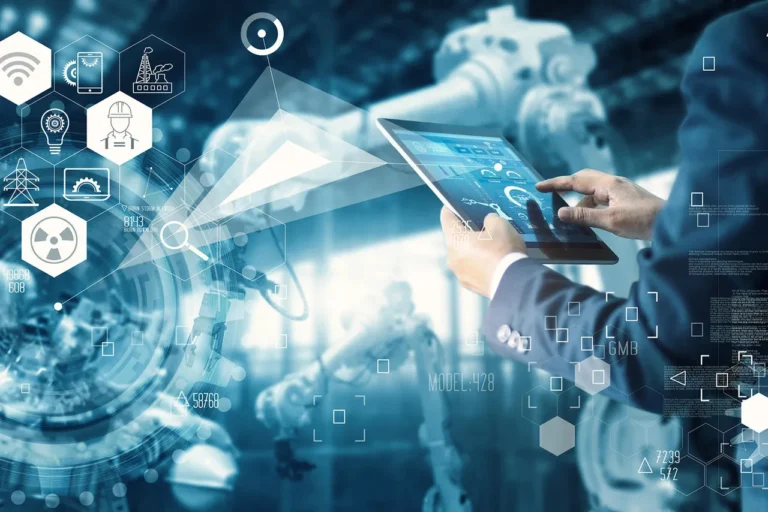Technologies like artificial intelligence and the Internet of Things have significantly increased the level of convenience, automation, efficiency, and personalization in our lives.
We get our morning coffee exactly how we like it, can adjust the lighting and temperature of our homes in a second, and can even secure and monitor our homes remotely.
Now, the power of these technologies is bringing forth the next level of smart and interconnected experiences. How? By supporting ambient computing.
Ambient computing has been making waves in the tech world, with its potential to further revolutionize how we live. This article will explore all you should know about ambient computing. Together, we will explore what ambient computing is, the technologies behind it, as well as the areas it is being applied to.
Let’s begin!
What is Ambient Computing?
Some people often confuse IoT and ambient computing, and understandably so. However, while the two technologies are similar, they are far from being the same.
IoT focuses on using the internet to create a network of interconnected devices that can collect, process, and share data to carry out a range of tasks.
Ambient computing, on the other hand, extends on this concept by allowing this network of devices to do what it already does and additionally integrate into our environment invisibly.
The vision behind ambient computing is to create a world where technology becomes smarter, invisibly integrated into all parts of our daily lives, and analyzes our behaviors and needs to deliver solutions without the need for human involvement.
Of course, this process relies on a range of supporting technologies, and the next section explores the most important ones.
The Technologies that Power Ambient Computing
Since ambient computing builds on the concept of IoT, it is no surprise that most of the underlying technologies are similar. Let’s take a look.
- Internet Connectivity: A fast and reliable internet connection serves as the backbone for the entire network. Without it, the devices won’t be able to share data or allow users to monitor remotely, just like with IoT. P.S. You might want to look into Cox Internet for a fast and reliable plan, if you don’t already have one.
- IoT Network: This network of devices allows ambient computing to function to its full potential. These devices can collect, process, and share data using the internet. This, in turn, allows the ambient computing system to deliver seamless and personalized solutions.
- Sensors and Actuators: Sensors are devices that collect and share real-world data, while actuators are devices that perform the required actions. By working together, they automate processes and significantly minimize the need for constant human input or monitoring.
- Artificial Intelligence and Machine Learning: These technologies help speedily analyze the large amount of data being collected by the devices and deliver personalized solutions efficiently. They analyze user preferences and behaviors, identify patterns, and adapt accordingly.
- Cloud Computing and Edge Computing: Devices collect and share large amounts of sensitive data, which must be stored securely. Cloud computing platforms offer a rather affordable way to store, process, analyze, and share this data. They also provide real-time analytics for data-backed decisions. To add the cherry on top, edge computing ensures fast data processing and analysis on local devices, allowing users to make real-time decisions efficiently.
With the power of these technologies supporting it, ambient computing has already begun to make major waves across multiple industries. The next section explores some of them.
Real World Applications of Ambient Computing
The power of ambient computing is most clearly visible in three industries: smart homes, smart offices, and the health and wellness industry. Let’s explore each in more detail.
- Smart Homes: Smart homes have multiple components, each of which provides a clear view into the advanced power of ambient computing. For example, smart thermostats and lighting systems can learn user preferences and behaviors and automatically adjust, offering more convenience, comfort, and cost effectiveness. Additionally, smart security systems and smart appliances can be controlled and monitored remotely.
- Smart Offices: Ambient computing can turn traditional workplaces into more comfortable, interactive, engaging, efficient, and productive ones. For example, sensors can be placed to regulate and manage factors like air quality and temperature. Additionally, meeting rooms with interactive whiteboards and video communication tools can make remote collaborations easier.
- Health and Wellness: Ambient computing can take many forms in the health and wellness sector. Some of the most significant ones include wearables and apps that can track metrics like your heart rate, sleeping quality, or steps. Using these, they can identify threats and provide personalized recommendations to overcome them.
Ambient Computing – Taking Interconnected Experiences to the Next Level
Ambient computing has already begun to transform the way we live and work. Whether it’s smart homes, offices, or wearables, the technology is creating seamless and hyperconnected experiences.
As this technology continues to evolve, it will blend even more seamlessly into all environments around us and deliver personalized solutions faster than ever.

